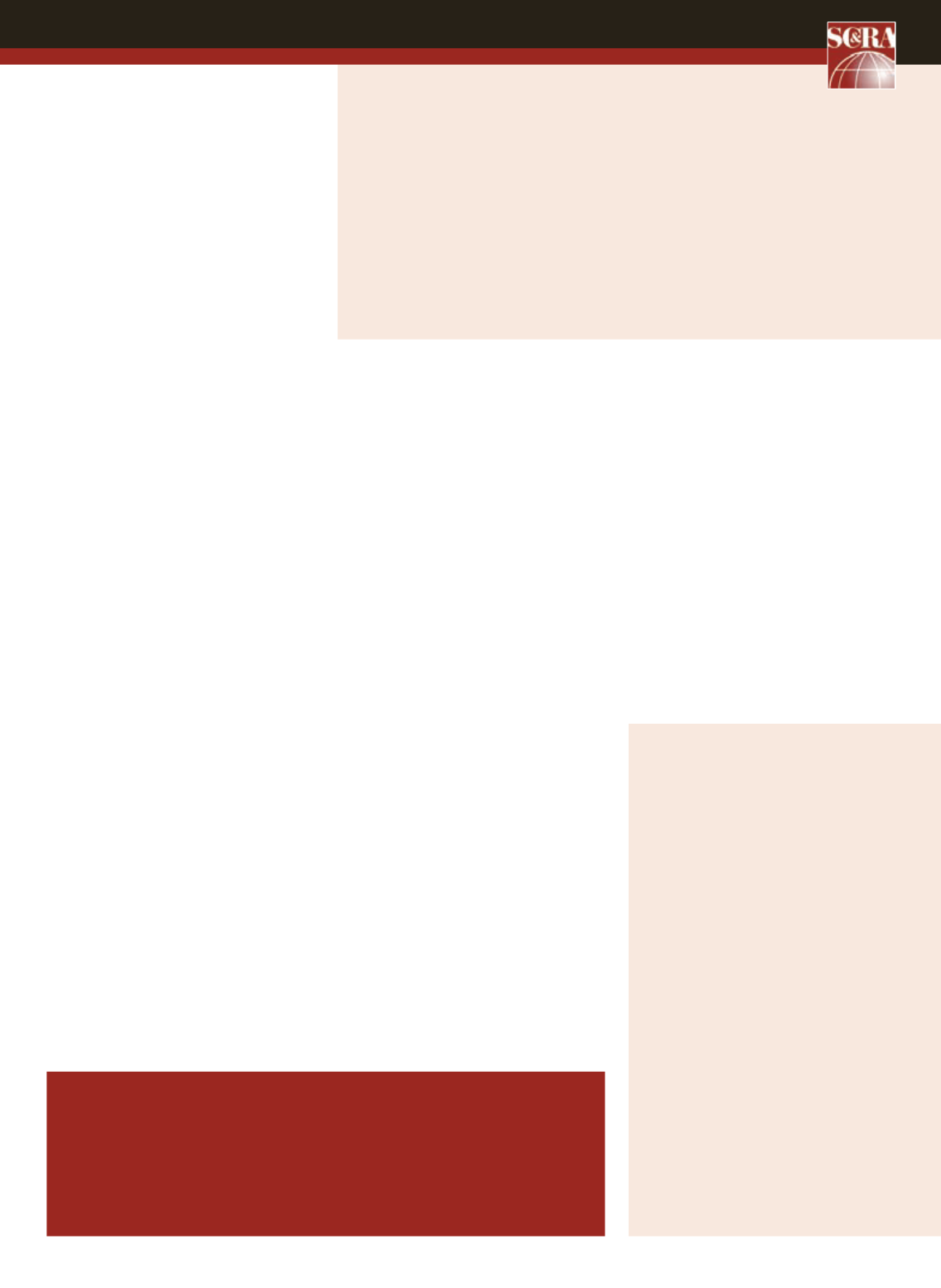
53
NEWS
OCTOBER 2013
ACT
tips
an active safety manager or committee?
What is the safety committee’s function
and role? What is senior management’s
role in safety? How are claims handled
internally?”
Emery says it’s impossible to anticipate
all of the information requests that an
insurance carrier will require, so it’s best
to focus on the most important basics –
particularly what a company does most of
the time.
“This can be a one- to three-paragraph
write-up outlining the insured’s
operations,” he says. “Or a description
of the insured’s management structure,
including years of experience. Even
schedules and lists of equipment. And if
there are any losses on the insured’s loss
runs, each loss should be fully explained.”
So you have your documents in order
and you’re on schedule – what about
pricing? Is the lowest price always the best
price?
“Believe it or not, sometimes it is,”
says Haynes. “A knowledgeable broker
will make sure that in the marketing
process, the carrier’s products are vetted
for appropriate application. The insured
company should never be in a position
of buying a cheap, inferior coverage that
creates unacceptable risk to them. Having
said that, we see it all the time – the crane
and rigging company that has ‘overweight’
exclusions on their Contractors
Equipment Floater, or on their Riggers
Legal Liability. They (agent or company)
don’t realize it’s there until they have the
claim. Sometimes, on large accounts with
strong management controls and good
historical losses, the lowest insurance cost
is the best, but not because of inferior
coverage, but rather the insured accepts
larger retentions (deductibles) and the
carrier’s premium charges are reduced
accordingly. As an insured company grows
and controls its losses, accepting this
type of risk transfer is often the best of all
options.”
Some companies view insurance and risk
management as a commodity, or purely
transactional, according to Wittwer.
“In a soft market, this approach can net
some lower pricing benefits; however, for
complex risks such as SC&RA members,
a sole focus on pricing will ultimately
lead to higher premiums,” he says. “When
losses start to occur, the underwriter will
be looking for substance in the insured’s
risk management program, and a ‘price
only’ focus has no substance.”
Stay out in front
Ultimately, Emery, Wittwer and Haynes
urge you to educate yourself as much as
possible about the coverage you need, and
certainly don’t wait around until after an
accident to learn about insurance.
“The insurance for a crane and rigging
account is very complex, and there
are no short cuts,” Emery assures. “I’d
recommend that the insured seek an
education through the SC&RA and the
preferred insurance agents that work
closely with the Association. Whether
or not an insured individual chooses to
work with one of the preferred insurance
agents or not – at least approach them for
the information they are most willing to
pass on.”
“Know what public information about
your company is out there,” adds Haynes.
“The underwriters are diligent about
getting into OSHA logs, the FMCSA
websites and other publically available
data. Get there first and make sure it’s
correct. If it’s not, or if it paints a poor
picture of your company, work with your
agent to address it.”
Wittwer stresses the importance of
the advisor’s consultation capabilities
(knowledge, experience and resources).
He says risks can be managed, transferred
and retained using a variety of strategies
and tools.
“Work with insurance advisors and
insurers that understand your business
model and industry. A significant
investment should be made by the advisor
to truly understand your specific business
model and objectives. The qualitative
aspects of the account often have direct
correlation to the quantitative factors that
determine final premium.”
■
‘‘
‘‘
”
”
The insurance for a crane and rigging account
is very complex, and there are no short cuts. I’d
recommend that the insured seek an education through
the SC&RA and the preferred insurance agents that
work closely with the Association.
RICK EMERY
President, Emery & Karrigan Inc.
A knowledgeable
broker will make sure that
in the marketing process,
the carrier’s products are
vetted for appropriate
application. The insured
company should never be
in a position of buying a
cheap, inferior coverage
that creates unacceptable
risk to them.
JEFF HAYNES
National Construction Practice Leader
Heavy Equipment Contractors, USI
SC&RA HEALTH PLAN
Members of SC&RA are able to reduce health insurance charges through the
Association’s endorsed health insurance provider, Association Benefit Resources, and
its alliance with United Healthcare. The program offers a value-point pricing health and
welfare benefit package, exclusively for SC&RA members. For information on the program
and the SC&RA Medical Trust, call Association Benefit Resources at 866-355-9241 or
email


